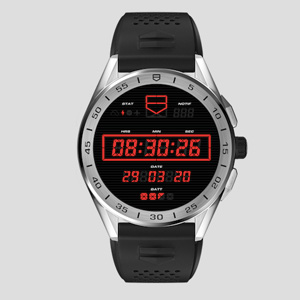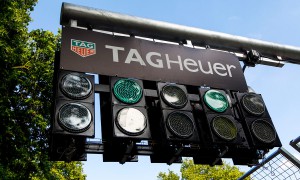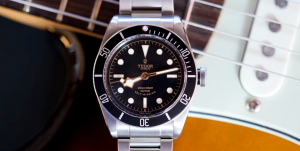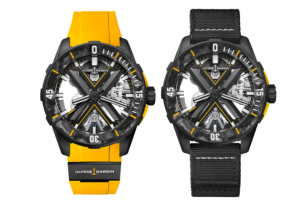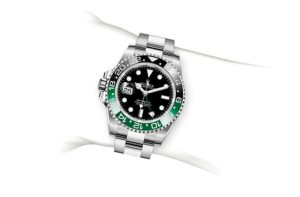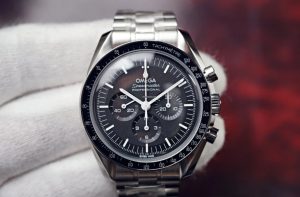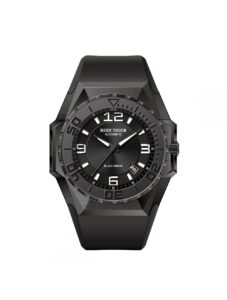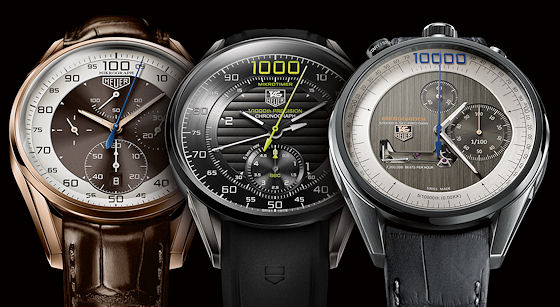
TAG Heuer is one of the world’s leading luxury watch brands, offering a strong history of innovation, deep connections with sports timing and automobile racing, and more recently, a series of groundbreaking developments in the field of ultra-fast mechanical chronographs, an innovative tourbillon watch priced under $20,000, and the launch of a luxury smartwatch. Here are 10 things you should know about TAG Heuer.
Sporting Roots
Heuer Watch Company was founded in 1860 by Edouard Heuer. His first watchmaking workshop was located in St-Imier, in the Swiss Jura region. The company soon built a reputation for quality workmanship and precision timekeeping. That, coupled with a series of technical innovations dating to the 1880s, led the company to become a specialist in the field of timing sporting events. During the 1920s, Heuer watches were used at the Antwerp, Paris and Amsterdam Olympics. In 1933, the brand launched the Autavia, the first dashboard stopwatch for race cars. Other more famous developments receive individual attention below. The affinity with precision timekeeping in sports, and with automobile racing in particular, continues to this day.
In 1985, Heuer was acquired by TAG Group (Holdings) S.A. TAG is an abbreviation for Techniques d’Avant Garde. TAG Group combined the TAG and Heuer brands to create the TAG Heuer company we know today. LVMH purchased the TAG Heuer subsidiary in 1999.
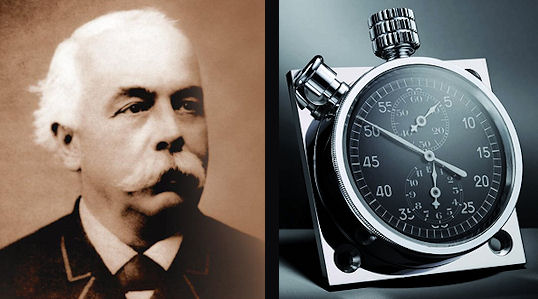
Simplifying the Chronograph
Back in the days when good engineering trumped marketing concerns, movement designers sought to develop calibers with fewer moving parts, to make them more reliable and easier to service. In 1887, Edouard Heuer developed and patented the oscillating pinion, which simplified the chronograph. This construction is still used by major movement manufacturers today.
In a nutshell, the pinion couples and decouples the chronograph, or stopwatch, mechanism and the regular timekeeping gear train that powers it. The pinion replaced a more complex system, simplifying manufacturing, assembly, adjustment, and service, all while delivering excellent timekeeping and reliability. This development allowed more mechanical chronographs to be produced at a lower cost, which sounds like a win all the way around.
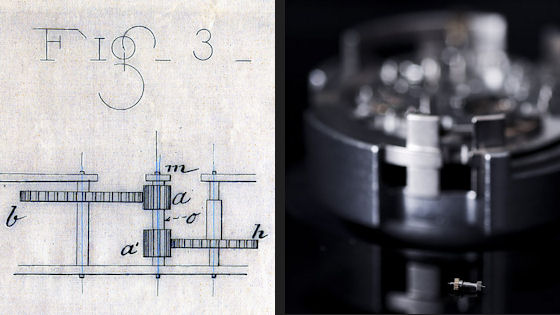
Faster and Faster
Another major technical achievement came in 1916, when Charles-Auguste Heuer launched the original Mikrograph. It was the first mechanical stopwatch able to measure 1/100th of a second. To accomplish this, the movement’s rate was 360,000 vph – ten times faster than the 36,000 vph chronographs that we usually think of as “fast.” The original Mikrograph revolutionized sports timekeeping and served as the official stopwatch for the 1920 Olympics.
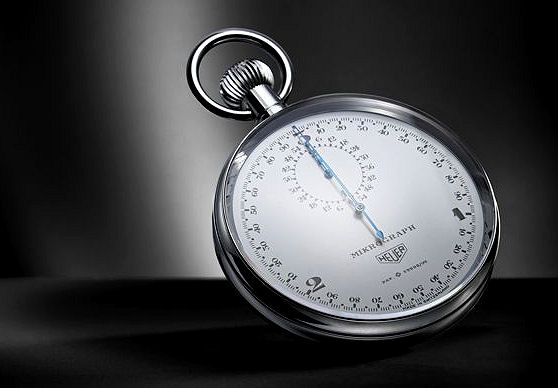
First Swiss Watch in Space
When you think of mechanical watches in space, you think of, well, not TAG Heuer. But you should, because as it turns out, Heuer was the first Swiss watch in space.
In May, 1961, President John F. Kennedy announced his goal of landing a man on the moon and returning him safely to Earth by the end of the decade. The first step toward that goal was to put a man into orbit. That man was John Glenn, flying the Mercury “Friendship 7” mission on February 20, 1962. Glenn orbited the Earth three times wearing a Heuer 2915A stopwatch on his wrist, on top of his spacesuit, held in place by a custom-made elastic strap. The watch served as the mission back-up timer, and it was used in space. Today, the watch is kept at the National Air & Space Museum in Washington, D.C.
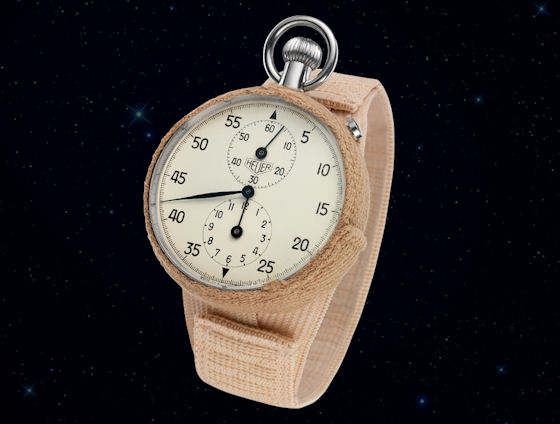
The Carrera
TAG Heuer’s most iconic models are associated with automobile racing, and one of the most famous is the Carrera. Jack Heuer suggested the name shortly after taking control of the company from his uncle (more on this below). The name comes from the Carrera Panamericana, a dangerous race run on public roads in Mexico from 1950 to 1954.
Jack Heuer wanted to create a watch for race car drivers. It had to be perfectly legible and tough enough to withstand the vibrations drivers experience during a race. The result is a watch that has achieved cult status.
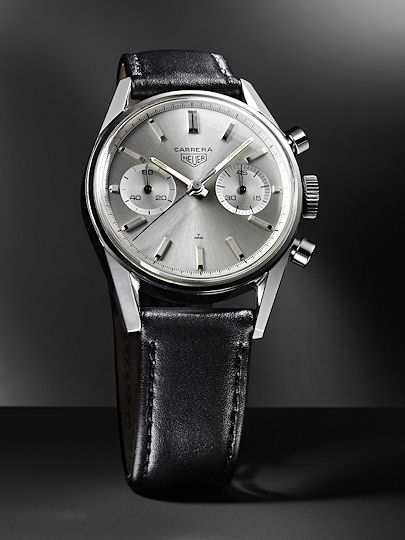
The Chronograph Race
When automatic winding wristwatches reached the market, they sold like hotcakes, leaving manual winders languishing on retailers’ shelves. Recognizing the need for an auto-wind chronograph, three companies and consortiums undertook to develop such a movement, none apparently aware of the others’ efforts. This set up a competition to see which company would reach the market first.
One of the competitors was Seiko, another was Zenith, and the third was a collaboration involving Heuer, Breitling and Buren. The collaboration developed a movement, and planned to announce it at the Basel watch show in March, 1969. By that time, they would have enough working prototypes to demonstrate serial-production capability. Then in January, 1969, Zenith announced its El Primero. Heuer and its partners held to their schedule, making their announcement at Basel in March. As planned, they backed up their claim by presenting hundreds of working watches, demonstrating serial production, or industrial, capability. At the show, Zenith had only a few prototypes (though, to be fair, the Zenith El Primero caliber was more sophisticated).
Heuer launched the movement as the Caliber 11 and staked its claim to history as a developer of the first automatic winding chronograph caliber.
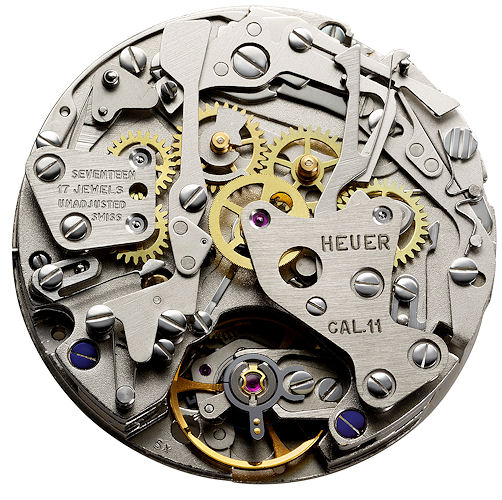
Monaco V4
The Monaco was famous enough, but in 2004, TAG Heuer took it to a new level with the launch of the Monaco V4 concept watch at Baselworld. CEO Jean-Christophe Babin intended to make a statement with the V4. The statement was that TAG Heuer will climb to new heights, developing cutting edge, avante-garde mechanical movements.
The V4’s birth was not an easy one. It took a few years to perfect the design, but perfect it they did, and the first Monaco V4 sold at the 2009 Only Watch charity auction, appropriately held in Monaco. Since that sale, several limited-edition series have sold out.
The Monaco V4 proved such a challenge because its movement represented a major break from traditional watchmaking. Rather than the usual gear train and wheels with teeth, the V4’s movement is belt-driven, and the design is inspired by an automobile engine. Many people thought it would never work. That TAG Heuer solved the problems is a testament to the brand’s newly developed capabilities, much of which is thanks to a man named Guy Sémon.
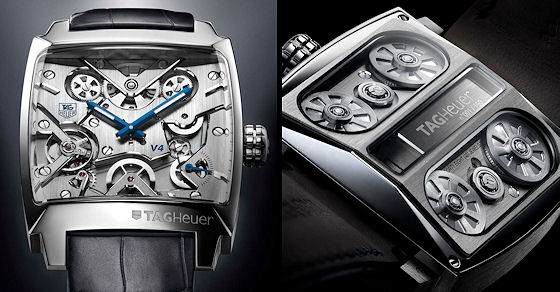
Ultrafast
It used to be that a 36,000 vph movement, capable of measuring tenths of a second, was considered fast. Then an engineer-pilot-physicist named Guy Sémon joined TAG Heuer, and the world changed. After solving the V4’s challenges, his skunkworks inside TAG Heuer has released, in rapid succession, the Mikrograph (360,000 vph measuring 1/1ooth of a second), the Mikrotimer (3,600,000 vph, measuring 1/1000th of a second), and the Mikrogirder (7,200,000 vph measuring 1/ 2,000th of a second).
Sémon accomplished these ultrafast rates by designing what he calls “dual architecture” movements. Each movement has two separate mainspring barrels powering separate gear trains regulated by separate escapements, each with a different frequency. The slow one handles regular timekeeping, and the fast one controls the chronograph. The Mikrogirder goes a step further, replacing the traditional escapement with a series of three tiny, ever-faster oscillating blades to measure time at rates that would have sounded comical a few years ago. To get an idea of how fast it is, consider that the Mikrogirder’s central chronograph seconds hand spins around the dial 20 times per second, rendering it invisible while in motion. Sémon has ushered in a new era in mechanical chronograph development.
you can buy a tag heuer replica watches review online shop.

